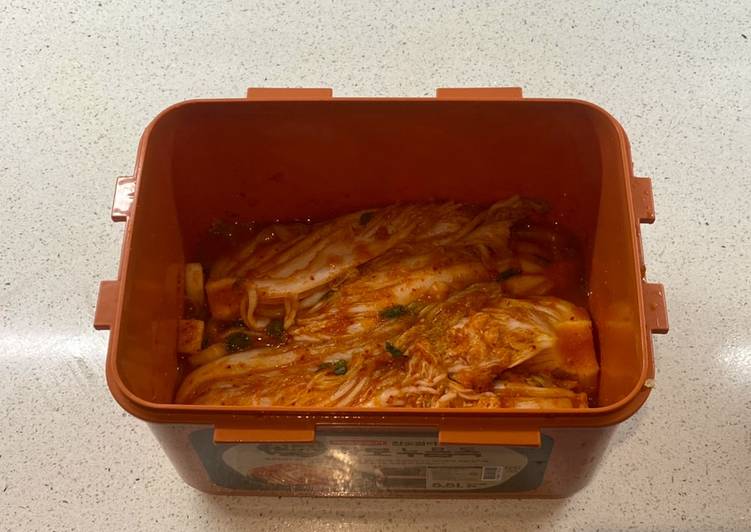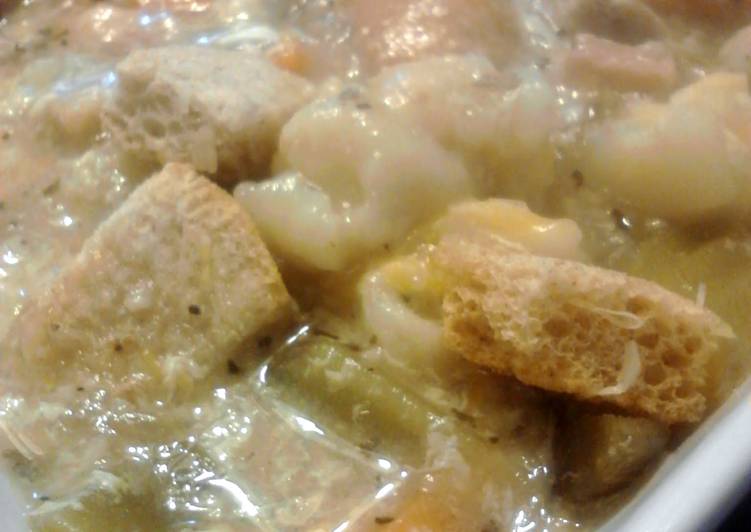
Kimchi - Family warmth and closeness may be obtained in basic approaches. A single of them is cooking and serving meals for the family members. As a housewife, naturally you do not need to miss a meal together right? Cuisine also can be the important to a content household, quite a few feel homesick due to the fact their cooking has been discovered elsewhere.
So for all those of you who prefer to cook and like it or not you've got to supply food for the family members, of course you also do not want the same dishes, right? You may cook with new and uncomplicated variants. Simply because now you are able to conveniently come across recipes devoid of obtaining to bother. Like the following Kimchi which you could imitate to become presented for your beloved family members.
Kimchi is one of the most well liked of current trending foods in the world. It is simple, it is quick, it tastes yummy. It’s appreciated by millions every day. Kimchi is something which I’ve loved my entire life. They’re nice and they look wonderful.
Kimchi is a traditional Korean dish made of seasoned vegetables and salt. Koreans eat it at nearly every meal. It can be fresh, like a salad, or it can be fermented.
To get started with this recipe, we must first prepare a few ingredients. You can cook kimchi using 15 ingredients and 13 steps. Here is how you cook it.
Composition needed to cook Kimchi:
- Salting the cabbage:
- 3 Chinese cabbages, each cut into half and then into quarters
- 2-3 cups coarse sea salt
- Water for rinsing Chinese cabbage
- Kimchi paste:
- 1 brown onion, cut into quarters
- 5-6 whole cloves garlic (use more or less depending on preference)
- 1-2 slices ginger (add more or less depending on preference)
- 2-3 Chinese pear (or use sweet and juicy gala or fuji apples), peeled and cut into chunks
- 2-3 tablespoons honey or sugar (use more or less depending in preference)
- 1/4 cup fish sauce (use more or less depending on preference)
- 1/4 cup Korean chilli flakes (these flakes are finer, use more or less depending on preference)
- 3 tablespoons Gochujang Hot Pepper Paste (use more or less depending on preference)
- 1/4 cup water (may need to add more water)
- 4 spring onions finely sliced (to be added into paste at the end)
Open the jar briefly to let out the. Kimchi pancakes is one of my go to dishes I create when I have a large volume of old sour pungent Kimchi pancakes are a savory pancake commonly made with wheat flour. It is made with a bit of. Kimchi is a traditional Korean dish of fermented vegetables, the most common of which are napa cabbage and daikon radish.
Steps to make Kimchi:
- For the cabbage, salting is the first process. Wash the cabbage, cut the cabbage in half and then each half into half again. Sprinkle coarse sea salt between the leaves of each cabbage starting from the bottom of the leaves where the stem is and working towards the top.
- Place salted cabbage in a large container with a lid and leave for 4 hours. Then turn the cabbage over and leave them for another 4 hours or over night. The cabbage are ready to be washed when you can bend the cabbage leaves without them snapping. Rinse the cabbage leaves a few times to wash of the salt properly and thoroughly.
- Thoroughly wash the cabbage in water about 3-4 times. Tip: each time the cabbage is washed it should be with fresh water. Tear a tiny piece of the cabbage leave to taste how salty it is. If the cabbage still taste salt wash a few more times to get rid of the remaining salt.
- Drain the cabbage using a colander and leave for an hour or so to get rid of any excess water on the leaves. In the meantime chop the spring onion sideways and place in a large mixing bowl and set aside.
- In a blender or food processor place the garlic cloves, onion, ginger, pear and blend together. Tip: If it does not blend add a tiny bit of water to start the process. Once ingredients are blended, it should be a smooth paste like consistency.
- Now add chilli flakes and fish sauce, honey, red pepper paste and water. Mix again until the paste now looks red. Give it a taste and adjust if needed (add more honey if you prefer it sweeter, chilli flakes or red pepper paste to make it hotter or fish sauce for saltiness etc). Tip: the paste should be a nice consistency so it's spreadable. Paste should not be too thick or thin (runny).
- Pour the paste into the large mixing bowl with the finely cut spring onions. Mix everything well together and ensure everything is evenly distributed and coated.
- Now it is time to coat each individual cabbage leaves with the paste. Tip: best for this part to wear some rubber gloves and an apron when applying paste as it stains and can get messy. On a large baking tray place a quarter cabbage quarter onto the tray and apply the paste mix in between each of the individual leaves. Generously applying the paste on each of the leaves.
- Once it has been coated well place the that cabbage quarter into the large container or special kimchi boxes (that allow no air to escape). Or if making smaller portions cut the cabbage quarter across into two halves to fit better into the jar(s).
- Repeat the process until there are no more cabbage quarters and leave left to be pasted. Once the jars or containers are full, cover the top with cling film (to prevent air escaping which allows it to ferment better) and place the lid on top of the containers or close the jars.
- Leave the kimchi at room temperature in a cool place away from sunlight and heat. The fermentation process should begin 2 days later. Once it starts to ferment, bubbles will also appear (the bubble gives the taste of tanginess due to it making its own vinegar). Tip: It is ready in about a week and do not be tempted to open the jars or containers before then. Best not to open the kimchi before the week as it will affect the fermentation process.
- After the week is up the kimchi is ready to eat. To eat the kimchi for serving, take one quarter out of the container. Cut once down the middle lengthwise. Then cut across both halves a few times for bite size pieces. Or if using the kimchi from the jar place the kimchi does not need to be cut. Tip: The cabbage end is not served.
- Tip: Kimchi kept at room temperature, lasts 1 week after opening. In the fridge it stays fresh much longer and can be kept between 3 to 6 month as it continues to ferment, this can lead to a more sour taste. Fridge the kimchi after opening as warmer temperatures can spoil it quicker. Place kimchi on a serving plate. Eat and serve as a side dish with a bowl of steamed rice and other accompaniments. Or can even be eaten as a snack or make into a stew and soup.
In addition to being served as banchan, Korean side dishes presented as. Add the kimchi juice, stock, Korean red pepper powder. Get KIMCHI.finance (KIMCHI) price, charts, volume, market cap, exchange list and more. Borrowed from Korean 김치 (gimchi), derived from 침채 (chimchae) in the late Koryo dynasty. Doublet of kimuchi. kimchi (usually uncountable, plural kimchis).
So that's going to wrap it up for this exceptional food kimchi recipe. Thank you very much for your time. I am sure you will make this at home. There is gonna be interesting food in home recipes coming up. Don't forget to save this page in your browser, and share it to your family, friends and colleague. Thanks again for reading. Go on get cooking!

